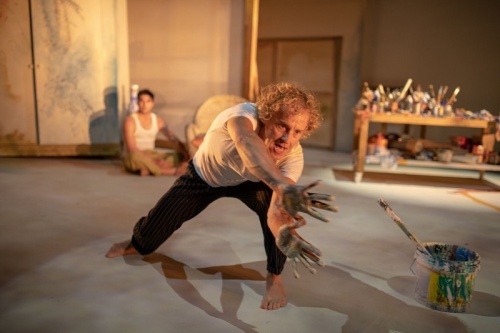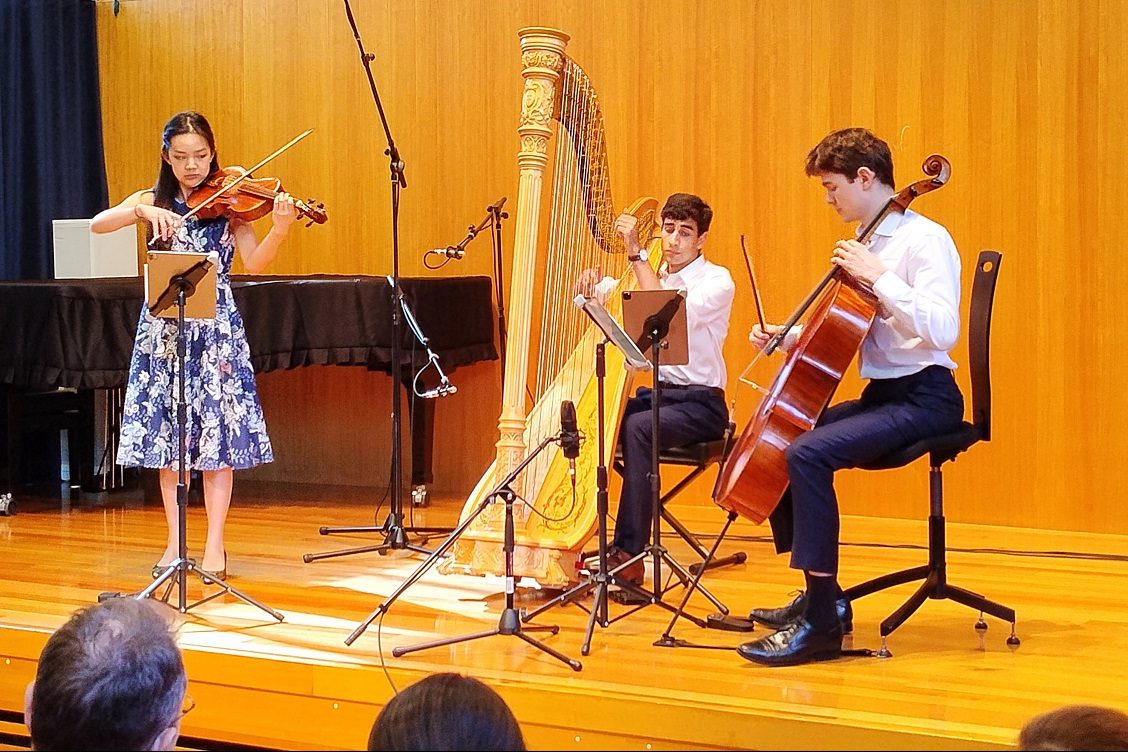
THE story of painter Brett Whiteley and his wife/muse Wendy seems perfectly suited to theatrical exploration, which is why director Kim Carpenter has created a very personal view of (as the subtitle has it) “a love story bound by art“.
Created, Carpenter says, from interviews, conversations, books, observations and personal experiences (he met Whiteley twice) “Brett and Wendy“ is on one level a verbatim theatre work about the artist’s life struggles and his search for what Carpenter calls “the God-given moments that we will all identify him by”.
Saturday’s world premiere in Parramatta saw a mixed audience of theatre and art people with, at the centre, Wendy Whiteley herself. Although friends were concerned as to what she would make of Carpenter’s interpretation, there was little, if anything, for her to worry about. The narrative approach chosen went easy on the characters of both Brett and Wendy.
This was not a character-driven production but rather a loosely chronological exploration of Brett Whiteley’s life and the inspiration afforded him by Wendy.

Brett (actor Paul Gleeson) was as lithe as the dancers and Wendy (Leeanna Walsman) looked superb as her thrilling voice served the narrative while not giving the audience any insight into her character.
Other characters played a part such as Whiteley’s parents, his sister Frannie, daughter Arkie, the mistress of latter years and Wendy’s lover, who introduced both of them to heroin.
More visual than verbal, this production saw the choreography by Lucas Jervies front and centre in creating a sense of what it is like to paint. In one scene, as Whiteley launched into one of his masterpieces, the dancers took hold of his limbs and “expanded” with him in an enhanced act of creation. In another their movement recreated the flow and the curves in Whiteley’s “bathtub” series based around Wendy’s body.
A curious but touching moment saw the replication in a tiny three-dimensional model of the motel in Thirroul, NSW, where the artist had died.
Carpenter’s evident fascination with the late artist Lloyd Rees (an early production was “Swimming in light…the world of Lloyd Rees) – led him to devote a considerable amount of time to the painterly influence of Rees on Whiteley.

Video designer Fabian Astore and costume designer Genevieve Graham filled the wide stage with images of the couple’s wilder explorations in swinging ’60s London and counter-culture New York, while a bare expanse upstage allowed the projection of huge images of Whiteley’s most famous works.
The audience saw the painting that took Brett to London on a scholarship, his series of heads of the London murderer, Christie, and the huge, increasingly disturbing work, “The American dream”.

Carpenter revealed his own fascination with paint as he had Whiteley (Gleeson) daub his hands on stage with thick paint in an act of sensual communication with his medium before embarking on his cerulean blue vision of Lavender Bay in “The Balcony 2”.
The narrative style often seemed at odds with these rhapsodic explorations of art, which called for a more dramatic script. This could have brought the characters to life and at the same time plumbed the depths. A momentary quotation of Dylan Thomas’s “Rage, rage against the dying of the light” looked out of place.
Avoiding the old theatrical dictum, “Don’t tell me, show me”, Carpenter has the tiny Arkie Whiteley, played by Yasmin Polley, narrate her dislike of the parents’ drug-taking rather than show it in action.
It was always going to be an uphill battle representing on stage the work of an artist from a non-theatrical medium.
Carpenter, as an artist himself, has a foot in both camps, but his “Brett and Wendy” seem less of a fully-realised painting but a brilliantly-coloured preliminary sketch.
Who can be trusted?
In a world of spin and confusion, there’s never been a more important time to support independent journalism in Canberra.
If you trust our work online and want to enforce the power of independent voices, I invite you to make a small contribution.
Every dollar of support is invested back into our journalism to help keep citynews.com.au strong and free.
Thank you,
Ian Meikle, editor




Leave a Reply